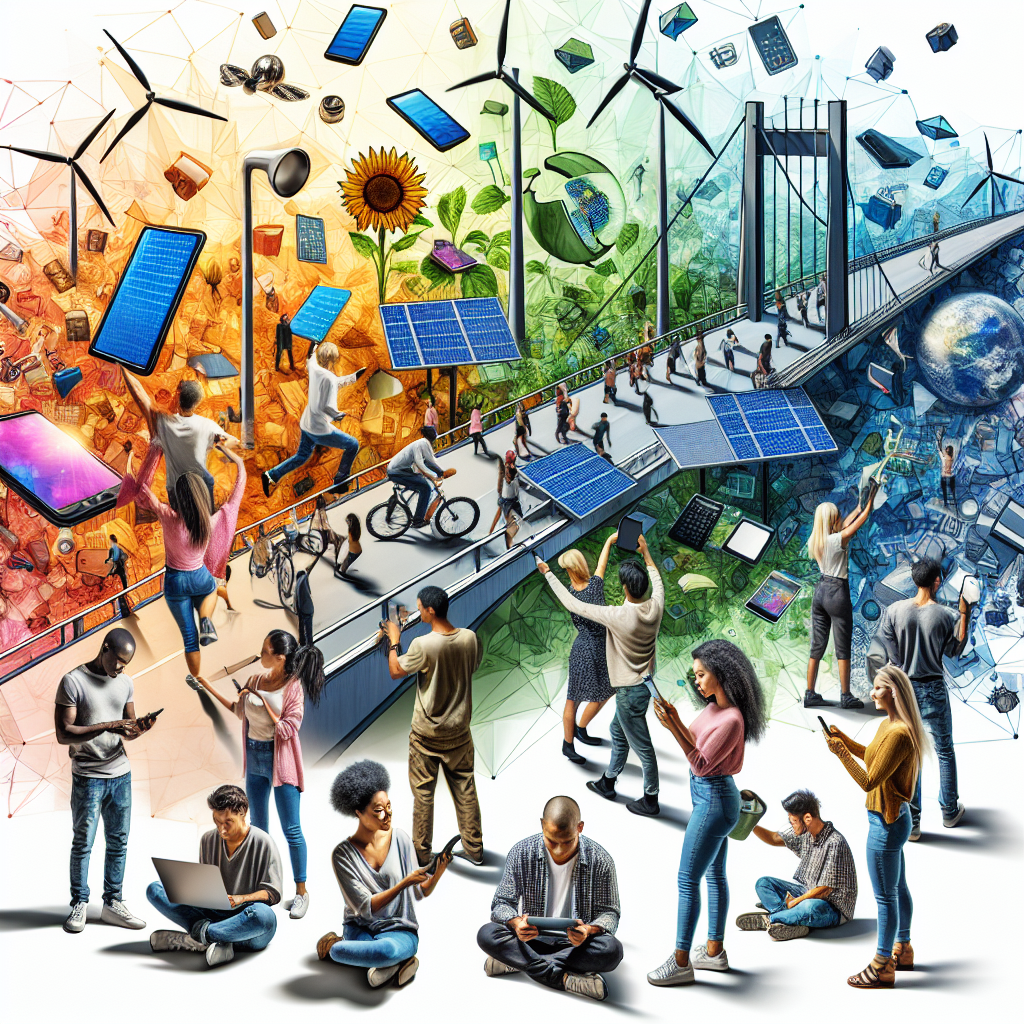Bridging the Digital Divide: Sustainable Technology for All
In the rapidly evolving digital landscape, the importance of accessible and sustainable technology cannot be overstated. As we march towards a future dominated by digital transformation, the chasm between those with access to the latest technological advancements and those without has become increasingly apparent. This disparity, known as the digital divide, poses one of the most significant challenges of our time, necessitating a concerted effort to ensure that technology serves as a bridge rather than a barrier. The solution lies in fostering sustainable technology for all, an approach that not only democratizes access to digital tools but also ensures their longevity and minimal environmental impact.
Understanding the Digital Divide
The digital divide refers to the gap between individuals who have access to modern information and communication technology (ICT) and those who do not. This gap exists not only in terms of physical access to computers and the internet but also in the ability to effectively use and benefit from these technologies. Factors contributing to the digital divide include socioeconomic status, education, geography, age, and gender. Bridging this divide requires a multifaceted approach that addresses both access and literacy.
The Role of Sustainable Technology
Sustainable technology encompasses innovations designed to reduce our environmental footprint. In the context of bridging the digital divide, it involves creating affordable, energy-efficient devices and ensuring equitable access to green technologies. Sustainable technology aims to make digital tools more accessible to underserved communities while promoting practices that are environmentally responsible.
Strategies for Bridging the Digital Divide with Sustainable Technology
1. Affordable Access: Making technology affordable is crucial in bridging the digital divide. This could involve subsidies for low-income families, scalable pricing models, or providing refurbished devices to those in need.
2. Digital Literacy Programs: Access to technology must be accompanied by education. Digital literacy programs tailored to various skill levels can empower individuals to make full use of technological tools, thus enhancing their educational and employment prospects.
3. Community-Based Solutions: Initiatives like community internet centers or mobile tech labs can provide access and training in underserved areas. These centers can use sustainable energy sources, such as solar power, to operate, thereby reducing their environmental impact.
4. Sustainable Design and Manufacturing: Encouraging the design and production of devices that are energy-efficient, durable, and easy to repair can reduce waste and ensure that technology is both accessible and sustainable.
5. Policy and Regulation: Government policies play a crucial role in making technology accessible and sustainable. This could include regulations that encourage the production of green technology, provide incentives for companies to develop affordable access solutions, or mandate digital literacy in education curricula.
6. Public-Private Partnerships: Collaborations between governments, NGOs, and the private sector can drive innovation and investment in sustainable technology solutions. These partnerships can leverage the strengths of each sector to address the digital divide effectively.
The Impact of Bridging the Digital Divide
Bridging the digital divide through sustainable technology has the potential to transform lives. It can enhance educational opportunities, improve healthcare access through telemedicine, foster economic development by enabling new forms of entrepreneurship, and promote social inclusion. Moreover, by focusing on sustainability, we can ensure that this digital transformation does not come at an environmental cost.
Challenges and Considerations
While the benefits are clear, bridging the digital divide with sustainable technology is not without its challenges. These include the initial costs of deploying technology, the ongoing need for maintenance and support, and the complexity of designing solutions that are both accessible and environmentally friendly. Additionally, there is the challenge of ensuring that efforts to bridge the digital divide are inclusive and address the needs of all segments of society.
FAQs
Q1: What is the digital divide?
A1: The digital divide refers to the gap between individuals who have access to modern information and communication technology and those who do not. It encompasses both physical access to technology and the skills required to use it effectively.
Q2: Why is sustainable technology important?
A2: Sustainable technology is important because it ensures that our increasing reliance on digital tools does not lead to negative environmental impacts. It involves designing and using technology in ways that are energy-efficient, minimize waste, and are accessible to everyone.
Q3: How can technology be made more affordable?
A3: Technology can be made more affordable through subsidies, scalable pricing models, providing refurbished devices, and supporting initiatives that aim to lower the cost of access and ownership.
Q4: Can digital literacy programs really make a difference?
A4: Yes, digital literacy programs are crucial in ensuring that individuals not only have access to technology but also know how to use it effectively. These programs can enhance educational and employment opportunities and promote social inclusion.
Q5: What role do governments play in bridging the digital divide?
A5: Governments can play a significant role through policy and regulation. This may include incentivizing the production of sustainable technology, funding affordable access programs, and incorporating digital literacy into education curricula.
Bridging the digital divide through sustainable technology is not just a matter of equity; it’s a necessity for our collective future. By ensuring that everyone has access to the digital tools and skills they need, we can unlock a world of opportunities while safeguarding our planet for generations to come.

